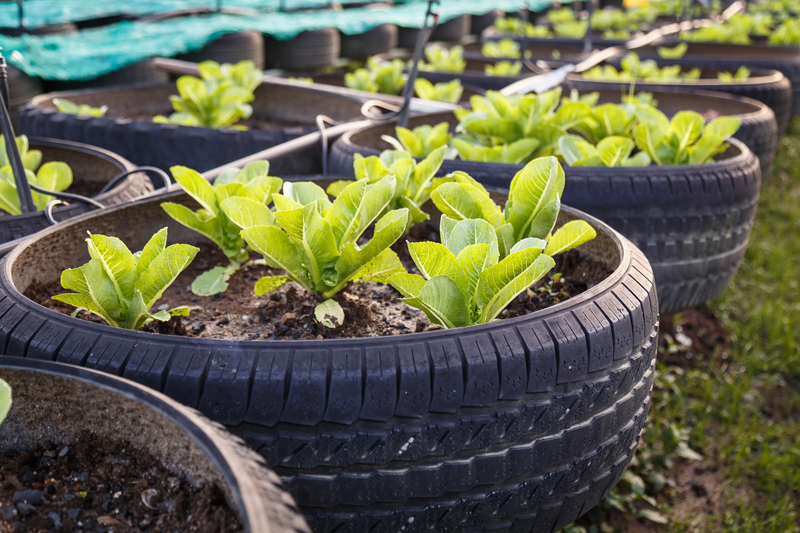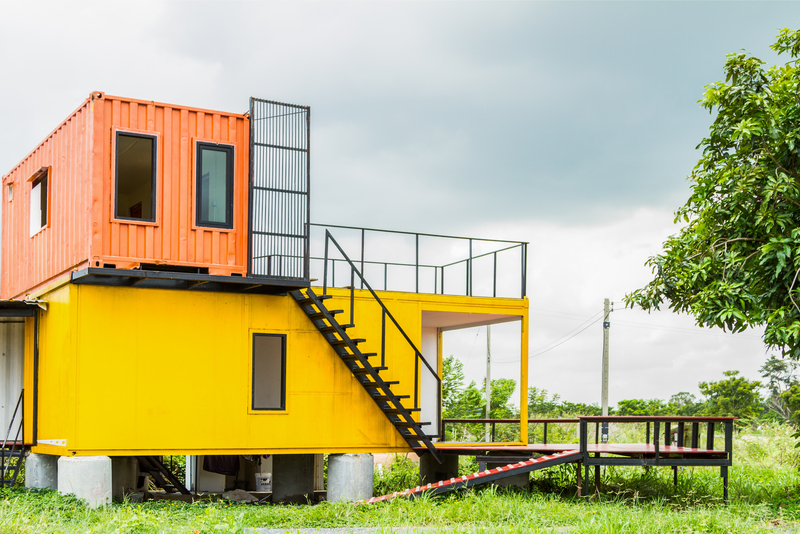Choosing the Right Recycling Center for Your Old Cookware
Every kitchen eventually requires a refresh: pots lose their nonstick, pans get warped, and baking sheets become too battered for use. Responsible disposal is crucial, but many people are unsure about how to recycle old cookware. Picking the right recycling center ensures your metal, ceramic, or even nonstick items are handled with care and help the environment. In this guide, you'll discover everything you need to know when choosing the best recycling center for your old cookware--ensuring your unwanted kitchenware gets a second life.

Why Properly Recycling Cookware Matters
With increased environmental awareness, many households are seeking sustainable methods of disposal for everyday items. Old cookware--from stainless steel pots to aluminum pans and cast iron skillets--should not end up in the landfill. Improper disposal pollutes the environment and wastes valuable resources. By selecting the right recycling center for cookware, you contribute to:
- Reducing landfill waste and extending the lifecycle of metals and composite materials
- Supporting local recycling programs that enhance community sustainability
- Preserving natural resources by encouraging the reuse of aluminum, steel, and other materials
- Reducing pollution by diverting hazardous items like nonstick pans from incinerators
What Types of Cookware Can Be Recycled?
Not all cookware is created equally--nor is it equally recyclable. Before you search for a recycling center for old pots and pans, assess your items:
- Stainless Steel: Highly recyclable, often accepted by scrap metal yards and municipal recycling.
- Aluminum: Lightweight and valuable. Some centers may require removing plastic/wood handles.
- Cast Iron: Durable and 100% recyclable. Some centers and repair shops may even refurbish old cast iron.
- Copper: Sought after by metal recyclers--clean copper is especially valuable.
- Ceramic and Glass: Selected recycling programs only; check your local facility's guidelines.
- Nonstick Coated (Teflon, Ceramic Coating): More challenging. Many centers will not accept due to chemical coatings--seek special hazardous waste programs.
Before bringing your cookware to a recycling center, remove excess food, plastic, or other non-metal attachments for smoother processing.
Steps to Find the Best Recycling Center for Cookware
Not all recycling facilities accept kitchenware in the same way. To find the best cookware recycling center near you, follow these strategic steps:
1. Research Local Recycling Guidelines
Start by checking your city's official website or waste management page. Here, you'll find lists of accepted recyclables and restrictions. Many curbside programs do not accept large metal cookware items--municipal drop-off or specialty centers may be required.
- Search "metal recycling center near me" or "pot and pan recycling your city" online.
- Look for updated lists of hazardous and non-hazardous materials.
2. Contact Scrap Metal Yards
Most old pots and pans, especially those made of aluminum or steel, are best suited for scrap metal recycling yards. These facilities have the equipment for safe cookware disposal and will often pay a small fee for metal weight.
- Ask if they accept items with handles or nonstick coatings.
- Check their requirements for sorting or cleaning items before drop-off.
3. Consider Household Hazardous Waste Events
If your cookware is nonstick or contains teflon coatings, it may need special handling due to chemicals. Many municipalities organize designated e-waste or hazardous waste events to ensure safe landfill diversion of such items.
- Confirm event lists and policies through your municipal waste management office.
- Inquire about drop-off limits or specific types of accepted cookware.
4. Check Big-Box Store Recycling Programs
Some large retailers, especially those selling kitchenware, offer trade-in or recycling services. This can be a convenient option if you're upgrading your cookware:
- Ask home improvement or kitchen specialty stores about available recycling initiatives.
- Sometimes, customers receive a discount on new items when recycling old ones.
5. Reuse or Donation as Green Alternatives
Before sending your used items to a cookware recycling facility, consider if they may be reused:
- Donate usable pots and pans to local shelters, charity shops, or school kitchens.
- List functional cookware online through platforms like Craigslist or Facebook Marketplace; someone may upcycle or repair it.
Choosing a recycling center dedicated to repurposing--or one that partners with local charities--further reduces waste and assists community members in need.
Key Factors for Choosing a Recycling Center for Old Cookware
It's not just about where to recycle, but also how they treat your items. Evaluate each potential center by considering:
Accepted Materials and Sorting Requirements
Ask about their ability to process different cookware materials:
- Do they accept coated, painted, or plastic-handled pans?
- Are there preparation steps required (e.g., separating metals, removing non-metal parts)?
- Will they take mixed loads, or do items need to be separated?
Certification and Environmental Compliance
Reliable recycling centers comply with state and federal environmental policies. Look for:
- Certifications and transparent recycling processes
- Clear information on how materials are handled and where they go
- Reviews from previous users on trustworthy platforms
Accessibility and Convenience
Choose a center that fits your needs and schedule:
- Do they offer extended hours, drive-through drop-off, or home pickup?
- Are there minimum or maximum weight/amount restrictions?
- How close are they to your home?
Additional Fees or Incentives
Some facilities may charge a nominal fee for hazardous or mixed material recycling; others may offer rebates for scrap weight:
- Inquire about prices, rebates, or trade-in discounts.
- Ask if clean, sorted pans are accepted for free.
Transparency and Community Impact
Opt for recycling centers that show commitment to responsible reprocessing and community welfare:
- Do they publicly share their environmental impact or donation statistics?
- Are they partnered with local schools or nonprofits?
Frequently Asked Questions About Cookware Recycling Centers
Can nonstick pans be recycled?
Most municipal recycling programs do not accept nonstick or teflon-coated pans due to their chemical coatings. However, scrap metal yards or hazardous waste events may accept them after handle removal and separation of materials. Always check local policies for safe nonstick cookware disposal.
Where can I recycle ceramic or glass cookware?
Ceramics and heat-resistant glass are not suitable for most curbside programs. Some specialty recycling centers or ceramics-specific depots accept them. Alternatively, repurpose these materials for gardening or DIY projects where possible.
Are there benefits to recycling metal cookware?
Absolutely! Recycling steel or aluminum saves immense energy and natural resources compared to raw material production. It supports the circular economy, reduces mining, and keeps valuable metals in use.
Can I get paid for recycling my old cookware?
Scrap metal facilities often compensate per pound, especially for valuable metals like copper, aluminum, or stainless steel. While cookware may not yield large amounts, bulk recycling can be worthwhile.
Should I remove handles and lids before recycling?
Yes--it's best to remove wood, plastic, or silicone parts from pots and pans before drop-off. Some centers may require this, while others will remove them on-site; consult with your chosen facility for preparation guidelines.
Tips for Preparing Your Cookware for Recycling
- Wash cookware to remove food residue and oils
- Remove all non-metal handles, lids, and knobs
- Separate metals (aluminum, steel, copper) when possible
- Bag or bundle similar types for easy sorting at the center
- Label nonstick or coated items clearly
Proper preparation makes recycling smoother and increases the chance your cookware will be effectively reprocessed.

Creative Alternatives: Upcycling Old Cookware
Not ready to say goodbye to that old skillet or pot? Consider creative upcycling if recycling options are limited in your area:
- Planters: Pots and pans make funky containers for succulents or herbs.
- Birdbaths or Feeders: A shallow pan is perfect for backyard wildlife.
- Wall Art: Arrange interestingly shaped or colored cookware as kitchen decor.
- Organizers: Use deep pots for holding utensils, tools, or craft supplies.
- Candle Moulds or Baking Displays: Give those worn-out cake pans new life as centerpiece decor.
Remember: Repurposing and upcycling not only prevent waste but also add a unique, personal touch to your home or garden.
Conclusion: Make a Smart, Sustainable Choice for Your Old Cookware
Choosing the right recycling center for your old cookware empowers you--and your community--to be more sustainable. From researching local guidelines to preparing your items and exploring creative alternatives, every step reduces landfill impact and supports eco-friendly habits. Remember, the process may require a little effort, but the rewards are significant: resource preservation, pollution reduction, and supporting responsible business practices.
Before tossing your old pot or pan, ensure it finds a responsible second use. Whether by recycling, donating, or upcycling, your efforts make a world of difference!
